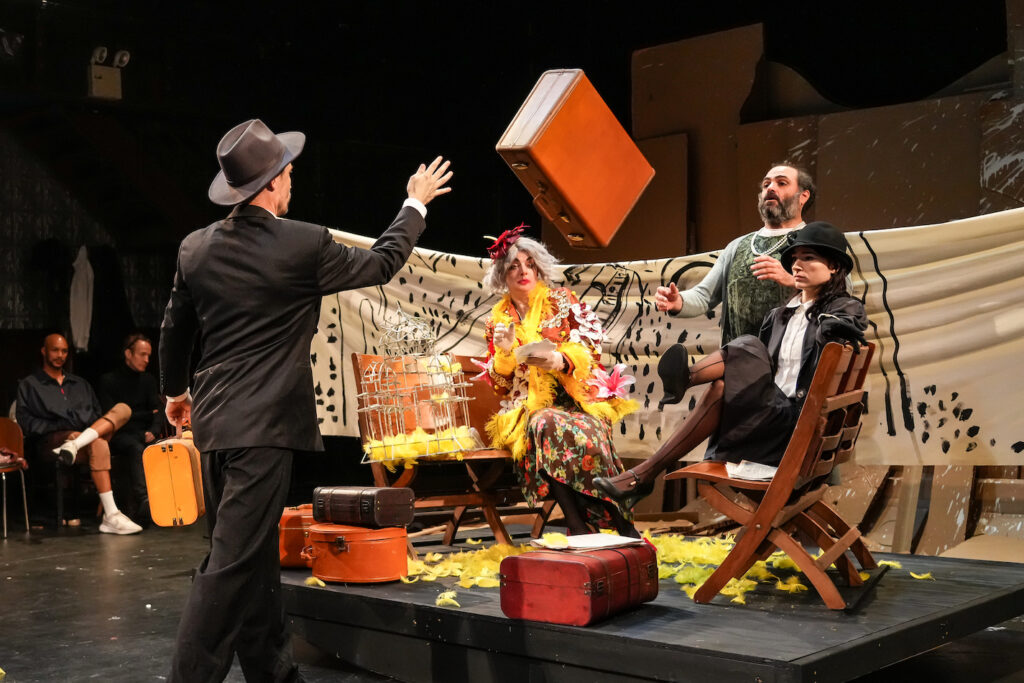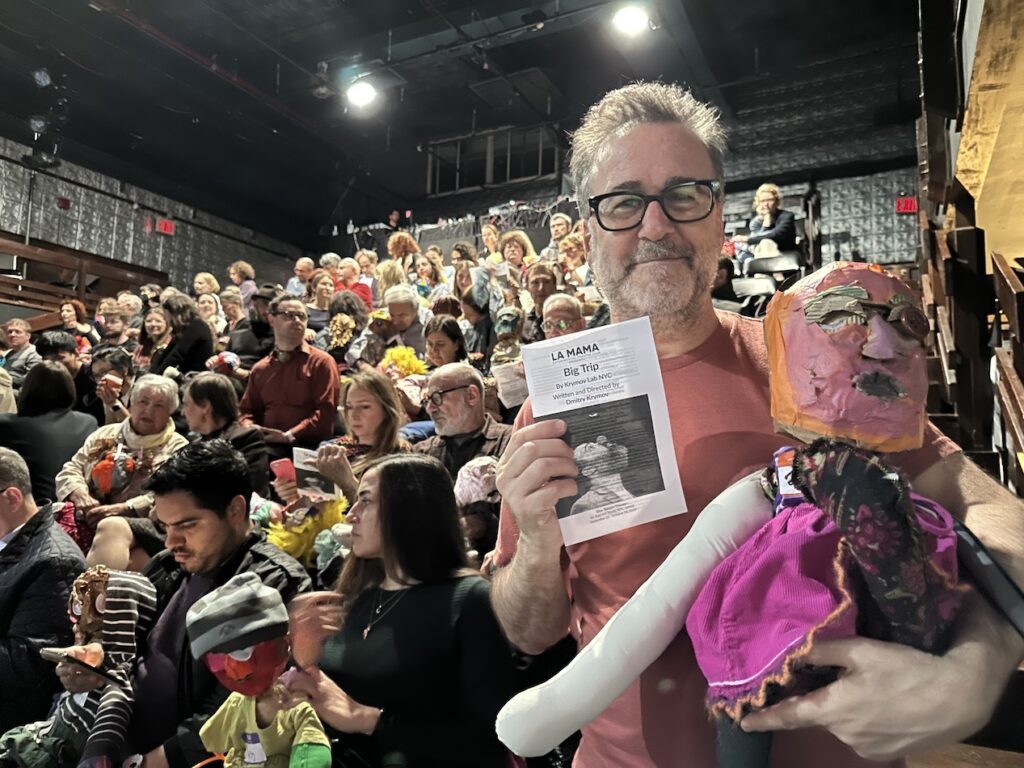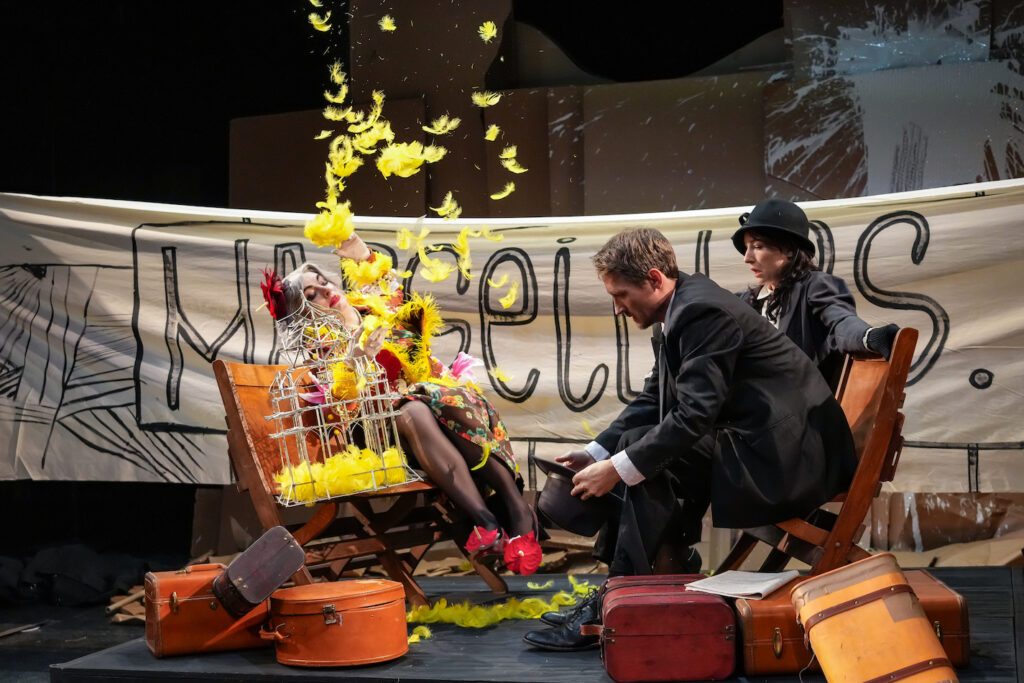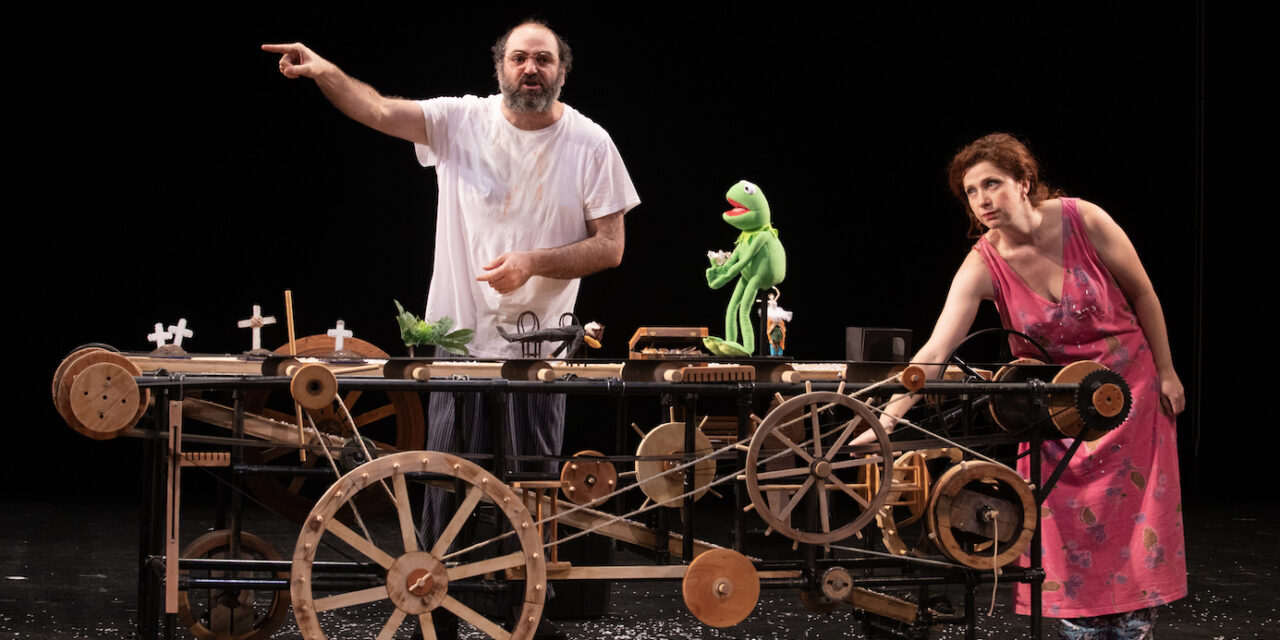By Ron Fassler . . .
When his country invaded Ukraine, Dmitry Krymov, a theater director of international reputation, was getting ready to come to the United States and direct Anton Chekhov’s The Cherry Orchard in Philadelphia. He left a day later. That was more than a year and a half ago. He’s been here ever since in self-imposed exile.
As a leading light of the Russian theater, he had signed a petition just before boarding his flight, calling for a stop to the war. Though he intended to return (he only packed a small suitcase), it was clear from actions taken by Russian authorities that he wasn’t welcome home. They shut down seven of his nine plays running in Moscow and stripped his name from the posters and programs from the two that remained open. He went from the heights to the depths, losing everything and having to start over again in a country where his English is faulty at best.

Thanks to a residency granted him at La Mama, a New York theatrical institution now in its 62nd season, the eponymous Krymov Lab NYC is now making its debut. Over the course of two evenings, running in repertory and presented under the title Big Trip, his shows offer stirring examples of what makes him a unique theater artist. The trips on which he takes the audience are not very big ones but are loaded with original thinking, wonderous images, and intense feelings, all hallmarks of his work. What Krymov does is to take classic texts from the great writers of world literature and turn them inside out, deconstructing them and digging deep for the emotion at the core of the stories they tell. He’s interested in visuals that go against the grain in order to see what thoughts they spark in his actors and his audiences. As an example: he once staged his own version of Don Quixote using no speech or dialogue. What is currently on display in both evenings of Big Trip at La Mama is challenging and often brilliant theater.
Part One is titled Eugene Onegin: In Our Own Words. It is something (but not exactly) like a children’s theater version of Aleksandr Pushkin’s 19th-century novel Eugene Onegin, one of the great works of Russian literature. As explained by one of the evening’s many narrators, who tell us they are all Russian immigrants, “Pushkin cannot be translated. Is like pyramid to cheesecake.” The natural solution is to “use the language of Russian theater,” which they do in the form of telling the story as you would to a child. To that end, when entering the theater, everyone is informed they must bring a child with them. This is a photo of me taken with “Nina”—who chose me more than I chose her—with whom I sat and watched the play.


Lest you think all will be lighthearted and rendered appropriate for children, best to think again. Within minutes a plant from the audience rises and shouts how inappropriate the cavorting on stage is with children dying every day in Ukraine. The disrupter then pelts one of the narrators with tomatoes, a stunt I’ve often seen in movies for comic relief, but never during a live performance for dramatic purposes. It’s this sort of never knowing what’s coming next that keeps the audience alert, riveted even, with dark humor always lurking around the corner.
The actors in Part One are a wonderful, goofy and charming group. They are led by Jeremy Radin, a bearded bear of a man, who commands the stage with joy and purpose as ringleader (he even employs a red nose at one point). Elizabeth Stahlmann commands, particularly in a long monologue—both disturbing and welcome—that brings a depth to the piece. And then there’s the “Meryl Streep of gooses,” actor Jackson Scott, whose deep, rumbly voice has the power to charm and terrify, as when he tells the puppet children who are seated in the front row just before the play begins, “Now remember—shut up!”
The imaginative staging reminded me of Paul Sills’ Story Theatre, a Broadway show I saw as a teenager that freely adapted stories by the Brothers Grimm and Aesop’s Fables. Directed by Sills, recognized as one of the two great progenitors of theater games (the other was his mother, Viola Spolin), he and Krymov share a love of common props made to represent everything under the sun in ways seemingly born out of improv.


Part Two: Three Love Stories Near the Railroad offers two plays adapted from short stories by Ernest Hemingway and one based on a scene from Eugene O’Neill’s Desire Under the Elms. Enacted by many of the same actors as well as a few new ones, this second part bears little resemblance to the circus atmosphere of the first, but still manages to dazzle, albeit in a more serious fashion. In adapting these works, Krymov is more interested in mining what he can from them, robbing their essence and putting them in a context that allows him to explore the feelings they bring up for him and his actors. It’s as deconstructive as the set, which for the three plays is a mass of cardboard, flats and abandoned props piled high upstage. He loves detritus, which is the architecture of the space in which Eugene Onegin is staged.
If you appreciate fanciful approaches to drama, never stooping to cutesy or twee, this is the kind of theater that will warm and nourish you like the best chicken soup. I mean, where else can you be treated towards the end of being told a great Russian story by the appearance of Kermit the Frog?
Big Trip. Through October 15 (in repertory) at La Mama’s Ellen Stewart Theatre (66 East 4th Street, between Second Avenue and The Bowery). www.lamama.org
Photos: Bronwen Sharp
Cover photo: Jeremy Radin and Anya Zicer


















